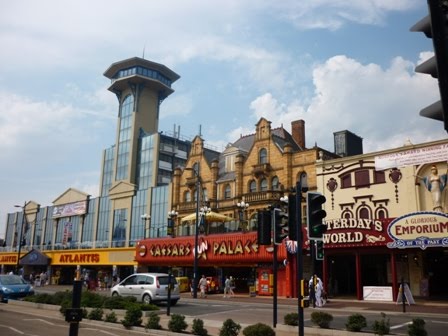
The trip along the Broads started in Wroxham. The round trip down stream was about an hour and a half. I thoroughly recommend the trip as not only was it extremely relaxing but the captain of the boat also gave an extremely informative commentary.
On the left, the first birds of the day, looking for lunch in Wroxham.
The Norfolk Broads (which actually are located in Norfolk and Suffolk) consist of around 50 shallow lakes (broads, from which the Broads get their name) connected by several tidal rivers.
The character of the area varies from semi-urban around towns and villages to rural and peaceful in the countryside. It is always extemely busy with river traffic, however.
The conservation of the area (which is equal to that of a National Park) is assisted by the imposition of speed limits on the waterways, this helps to limit 'wash' from water craft which erodes the banks and destroys the habitat of wildlife.

Some of the craft still seen on the Broads are the wherries. These are traditional boats (inspired by the Viking long-boats) and have been used historically as trading boats and pleasure craft.
Pictured here, the Solace - a privately owned pleasure wherry usually found moored in Wroxham.

This wherry is the Albion, a trading wherry - characterised by the black sail; blackend traditionally with tar for protection from the harsh envrionments in which the boats operated. The hulls are also black with a white patch on the prow - though to come from the eyes painted on Viking long-boats to ensure that the boat always has safe passage.

Here we are out on an open broad. Although most of the land surrounding the Broads is in private ownership and often subject to privacy restrictions the Broads themselves are public waterways with the right of navigation.

These reeds are used for thatching the roofs of buildings, not just in Norfolk but all over the UK.
Some of the bird life on the Broads.
Another Wherry - this is the Ardea with her unique teak hull
An urban part of the Broads
Back at Wroxham, different local wildlife!































